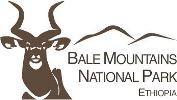Land Cover Change
Ecosystem degradation caused by increasing human settlements, expanding agriculture and unsustainable natural resource use pose a serious threat to this vastly important area, particularly Harenna forest and the Bale watershed. However, quantitative and qualitative information on the extent of land cover change and the long-term impact of change is not available for the park. Thus, a spatio-temporal analysis of change in land cover/use has been identified as a priority in the BMNP General Management Plan (GMP 2007-2017) in order to quantify and map past land cover/use change and predict future changes under different management regimes. Research is now being undertaken to assess land cover and land use change in the BMNP, the results of which will be used to guide management actions that will mitigate threats to the ecosystem and enable sustainable natural resource management for the long-term conservation of the park. Specifically, the objectives are (i) to identify and map the major vegetation types and land use within the BMNP based on existing literature and remote sensing data available for the last 30 years, (ii) to identify areas that have experienced land cover/use changes at different scales and to quantify the extent of land cover/use change over the last 30 years (iii) to identify and quantify natural factors (e.g. climate change) and human-induced threats (e.g. expanding settlements and agriculture) that underlie the observed changes in land cover/use in BMNP, and (iv) to develop a spatially referenced, predictive model to forecast future changes and impacts on the BMNP ecosystem, including the Harenna forest and Bale Mountains watershed.
This research is currently being undertaken by Eyob Teshome towards his PhD at the University of Witwatersrand in collaboration with Frankfurt Zoological Society.
